Three toast racks in four centuries
Mrs Beeton, Household Management, 1861
The toast rack appears to be a purely British invention from the late 18th century. They were sometimes referred to as ‘toast machines’, and Mrs Beeton (the 19th-century household management guru) wrote about the importance of toast racks in her well-known book Household Management in 1861, advising that “As soon as each piece is ready, it should be put into a rack, or stood upon its edges, and sent quickly to table.”
As useful objects, toast racks have somewhat fallen out of favour recently. As examples of design, however, they are timeless. I’ve taken three examples, each of which serves as a reflection of the significant design innovations/movements of their time...and a fourth that demonstrates the timelessness of good design.
1) The 18th Century - Hester Bateman toast rack
The first piece in our ‘Toast Rack Tour’ is in the Silver Galleries, room 65. It was produced in the workshop of Hester Bateman, a successful silversmith in the late 18th century. She learned her trade from her husband, and she set up her own business when he died in 1760. The V&A says that it’s likely that she managed the workshop rather than made the silver pieces herself. Her firm was one of the most technologically advanced silver firms in London at the time, exporting across England and North America.
| This silver toast rack, from Bateman's workshop in 1787-88, is elegant and modern, with its oval shape and clean lines. The rack of wirework and the base were cut from sheet. The components were machine made but assembled by hand as a result of new production techniques developed in Sheffield. Technological developments from the 1760s led to manufacturing innovations that are demonstrated in a number of toast racks from the period. Sheffield plate, for example, was a laminate of sterling silver fused onto a copper core. It was cheaper to use than silver and meant items could be produced for less wealthy customers using designs originally made in more expensive silver. Some toast racks of this period were made almost entirely of sections of wire soldered together. |
The second piece in our tour of toast racks is in the British Galleries, room 125, on level 4.
Freelance designer Christopher Dresser is, in my book, the King of Toast Racks. His toast racks are among his most innovative and recognisable designs – simple lines, striking profiles, form and function brought together in an apparently effortless way.
| Dresser - botanist, writer, scholar, designer - was working in the late 19th century, and his ethos contrasted with that of his contemporary William Morris. Morris and his Arts and Crafts movement deplored the way industry and mass production were breaking the link between maker and user. They wanted a return to the integrity and honesty of hand crafting. Dresser, on the other hand, celebrated the opportunities offered by mass production and the way it could bring beautiful design to a wide audience. This Dresser toast rack, made in 1880, is of electroplated nickel silver. It was mass produced and anticipates the Modernist style of the following century. |
The third item in the tour is in the 20th Century Gallery on level 3.
Mid-century designer Robert Welch carried on the tradition of Arts and Crafts designers but like Dresser he embraced mass production. His Campden Range from 1957 demonstrated an early use of stainless steel for dining tableware. The rocket-like shapes of his candelabra and cruet set reflect the interest in the emerging Space Age.
| Welch was appointed as design consultant to J.J. Wiggin of Bloxwich, a family business established in 1893 that began manufacturing stainless steel tableware in 1928. The story goes that the current owner's grandmother suggested stainless steel as low-maintenance alternative to silver. The company was also known as Old Hall and it produced many notable designs in stainless steel in the mid-20th century. This toast rack was made in 1958 and is of stainless steel. It won Welch the Council of Industrial Design Award in 1958. The judges praised its ‘economical design’, its ‘elegant and ingenious construction’ and the ‘eminently suitable material’ of stainless steel. |
| 2) (again) The 21st Century – Alessi toast rack And finally, we come to the last toast rack in our tour, which unfortunately is not on display in the V&A. It’s not a fourth example but a revisit of the second one - a stainless steel modern replica of the Dresser toast rack shown above, still being produced by the Italian company Alessi. Perhaps toast racks haven't fallen completely out of fashion then. Thank goodness for that. Mrs Beeton would be pleased that standards of toast making are being maintained to this day. |
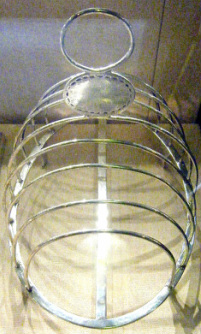
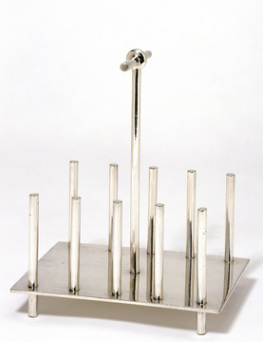
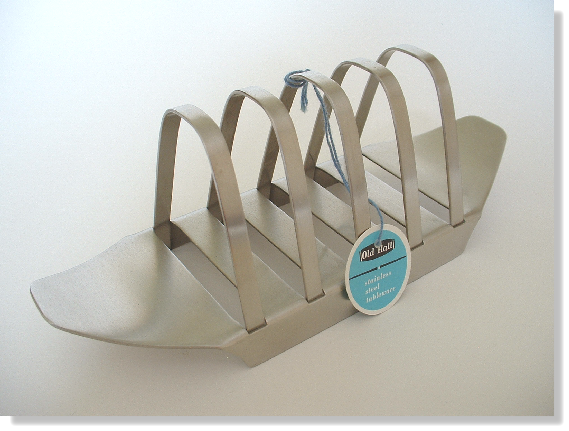
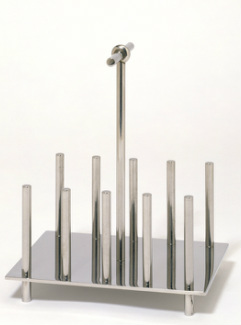
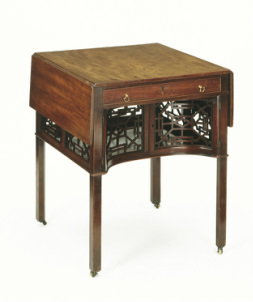
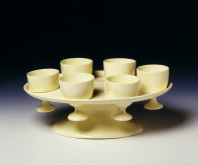
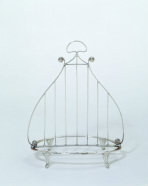
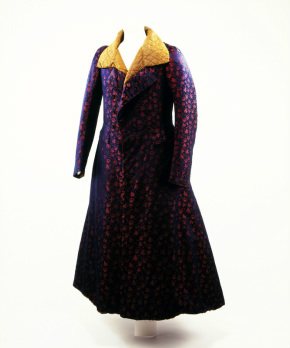
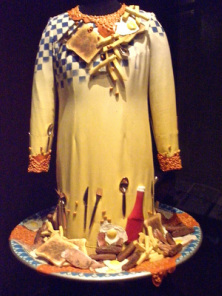
 RSS Feed
RSS Feed
